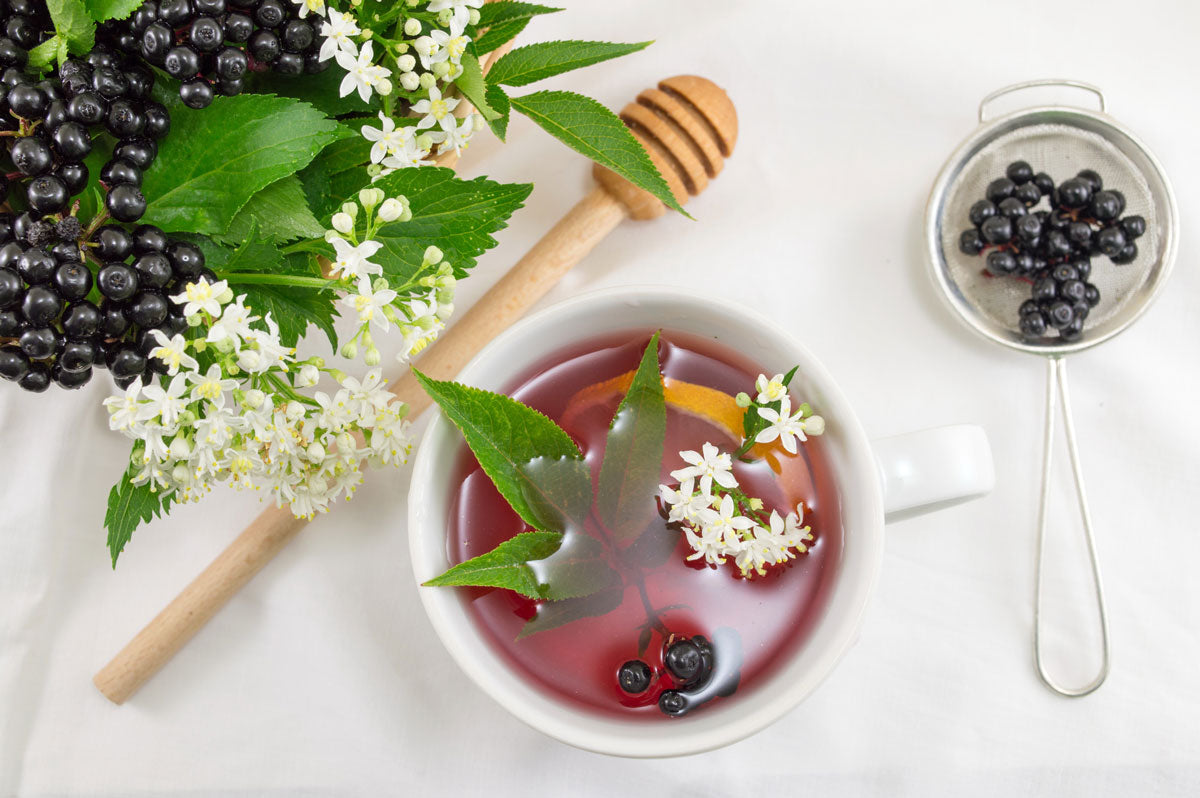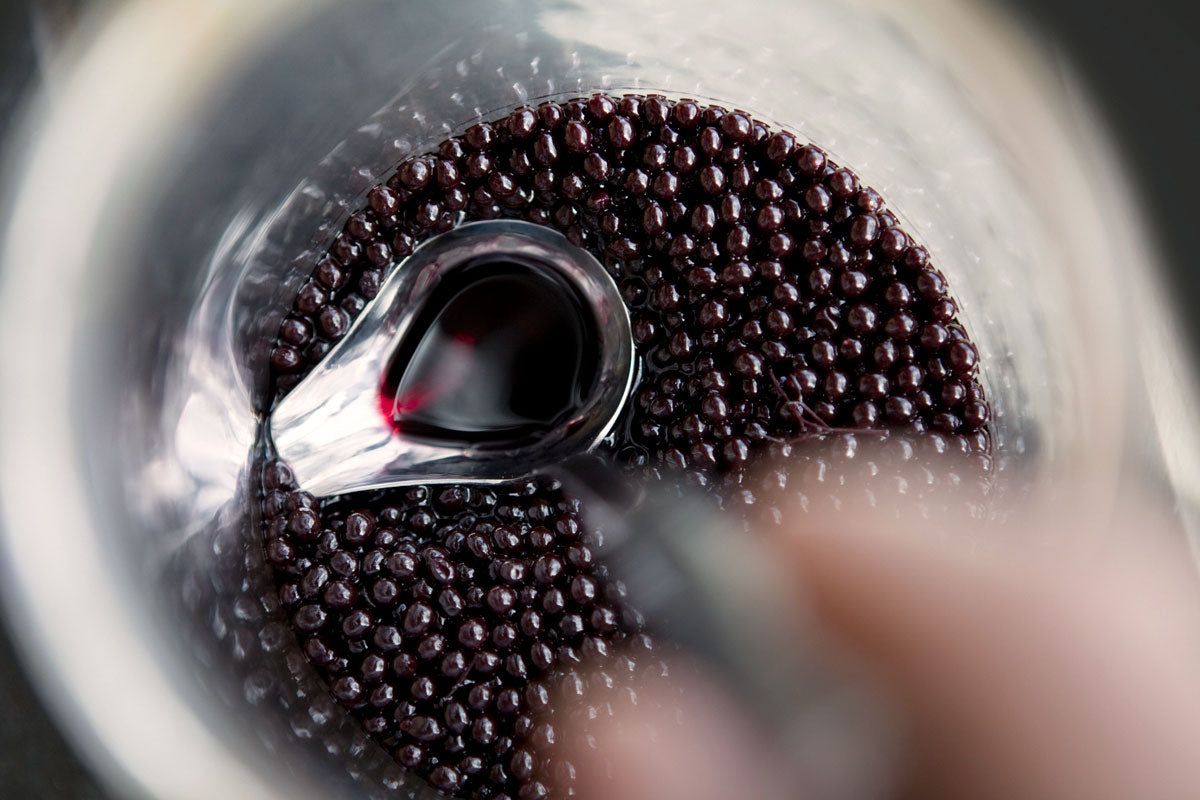What is Elderberry? The Immunity Powers of the Ancient ‘Medicine Chest’
What is elderberry? This little berry carries a big weight on its shoulders. Called the “medicine chest” by the Father of Medicine himself, Hippocrates, black elderberries have been used in therapeutics since ancient times. The elder tree is even considered a magical element in cultures around the world, home to fairies and a respite from witches.
The elderberry’s history in medicine and folklore is rich. This deliciously dark purple berry grows on the branches of the mystical elder tree. Native to Europe, Asia, and North America, the elder tree is prized for its healing powers and thought to hold magical powers.
In Danish folklore, the elder tree is home to the dryad Hylde-Moer, the Elder-tree Mother, whose permission must be sought before any human could chop down her tree and use it for their own purposes: "Lady Ellhorn, give me some of thy wood and I will give thee some of mine when it grows in the forest.” 1
The Elder tree was thought to drive away evil spirits in Russia, and in England, the enigmatic tree was thought to never be struck by lightning. In countries around the world, the Elder Tree has been said to ward off evil influence and give protection from witches.1
The mysterious folklore that surrounds the elder tree is perhaps closely connected to the wondrous medicinal properties of the tree’s bark, flowers, leaves, and purple-black berries. The elder tree and elderberries have been used in traditional folk medicine dating back centuries.

The Healing Powers of the Elderberry
The elder tree was described as “the medicine chest of the country people” by 17th century German physician Michael Ettmueller, the great Dutch physician Herman Boerhaave “never passed an Elder without raising his hat.”1
Perhaps the highest esteem came from the Father of Medicine himself, Greek physician Hippocrates, who called the elder tree his “medicine chest” in 400 BCE. Other classical healers also held the elder in high regard as one of nature's greatest medicinal plants.
Elderberries and other parts of the elder tree, including the flowers, leaves, and bark, have been used in folk medicine around the world for centuries. The plant’s many parts have been used to make ointments, tinctures, teas, wine, and the popular elderberry syrup. It is important to note that raw elderberries are toxic and must be cooked before consuming. The stems, leaves, and bark of the elder tree can also be toxic if ingested raw.
In North America, a different type of elderberry tree grows wild. Native Americans used the American black elderberries for food and purple dye, and used the bark, leaves, and flowers for their therapeutic benefits.
Elderberries and the elder plant are thought to have anti-inflammatory properties and reduce inflammation. The plant was used to ease symptoms of a number of ailments—from headaches to wounds to rheumatism—in traditional folk medicine.
This mystical and ancient tree is still widely used in our modern era. Elderberries are a popular way to strengthen the immune system* naturally. The European elder, especially, with its dark purple berries, is rich in immune-building compounds that make the elderberry fruits so powerful.*

Elderberry Benefits: Rich in Color, Rich in Antioxidants
The benefits of elderberry are far reaching, but perhaps the most important are the health benefits they provide.
European black elderberries are full of antioxidants called flavonols and anthocyanins, two types of phytochemical that are important for overall health and wellbeing. Research shows that flavonols may help fight inflammation and tumor growth, while anthocyanins are associated with lower blood pressure.
Anthocyanins are also responsible for the dark purple color of elderberries and are found in many pigmented fruits, including blueberries, raspberries, and cranberries. Anthocyanins are a powerful antioxidant that help fight free radicals in the body.
When left unchecked, free radicals can damage cells and cause harmful diseases. Antioxidants, like the flavonols and anthocyanins in elderberries, help keep these free radicals in check.
Elderberries contain nearly twice as many antioxidants as most other berries, making them especially potent immune supporters.* They also contain high concentrations of vitamin C, dietary fiber, and antibacterial agents.
It’s no wonder elderberries are prized in traditional folk medicine throughout the world, and are used in dietary supplements in today’s modern age.
These tiny berries are full of immune-supporting* goodness, but they have been used in other ways throughout the centuries, adding to the cultural significance of this incredible plant.

What is Elderberry Good For Besides Immune Support*?
What is elderberry good for besides immune support* benefits? The dark pigmented berries have been used to make dyes for clothing and ink for art and writing.
Elder leaves have been used to make ointments that are applied to wounds; the trees have been used to make furniture; and the soft pith of the plant’s stems has been used to make flutes and whistles. In fact, elder is also known by its genus name Sambucus, which comes from the Greek word sambuce, an ancient musical instrument.
Elder trees can also be important additions to crop-growing farms wherever they grow naturally. In California, for example, American Elders attract insects and other pollinators that are natural pest reducers and can help farmers keep mites and aphids off of their crops.
Berry Powerful Immune Support*
The wonder of the elder tree dates back centuries, but it is clear that its impressive properties used in folk medicine, natural immune support,* farming, and other culturally significant areas are what makes this ancient plant so magical.
Elderberries are nutritional powerhouses, naturally rich in antioxidants, and the health benefits of elderberry extend even further than potent immune support.* These little berries have captured imaginations for thousands of years, and today, their magical powers are bottled just for you.
Source:
1 “A Modern Herbal,” by Margaret Grieve, published 1931, retrieved on September 2, 2020: https://www.botanical.com/botanical/mgmh/e/elder-04.html#his
*These statements have not been evaluated by the Food and Drug Administration. This product is not intended to diagnose, treat, cure, or prevent any disease.
